The snow is piling up …. again! And so, what else to do but relax with a good book, perhaps even a gardening book, or work on the spring seed order, or compile the list of perennials that can’t possibly be lived without.
Today I have completed reading The Explorer’s Garden: Shrubs and Vines from the Four Corners of the World by Daniel J. Hinkley, with tales of hydrangeas, viburnums, edgeworthias (below), and mahonias found in foreign lands. This is adequate inspiration to survive the winter a bit longer.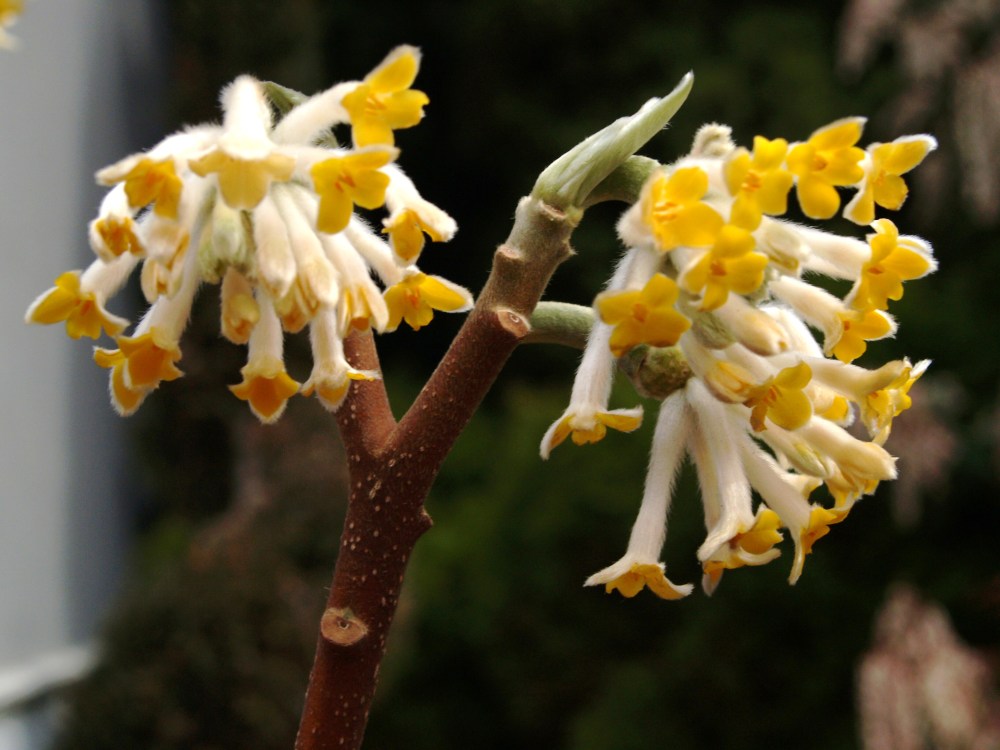
Though the garden is covered by a white, snowy blanket, with renewed enthusiasm I have concluded that my project for this spring will be to rejuvenate the lower half of the dry, shady garden between the house and the sliver of maple and poplar forest that borders the property, an area perhaps fifty or sixty feet square. When the garden was younger, and shade from the maples was less intrusive, a Forest Pansy redbud was planted equidistant from the house to the forest edge, but as shade has crept closer, the redbud has declined.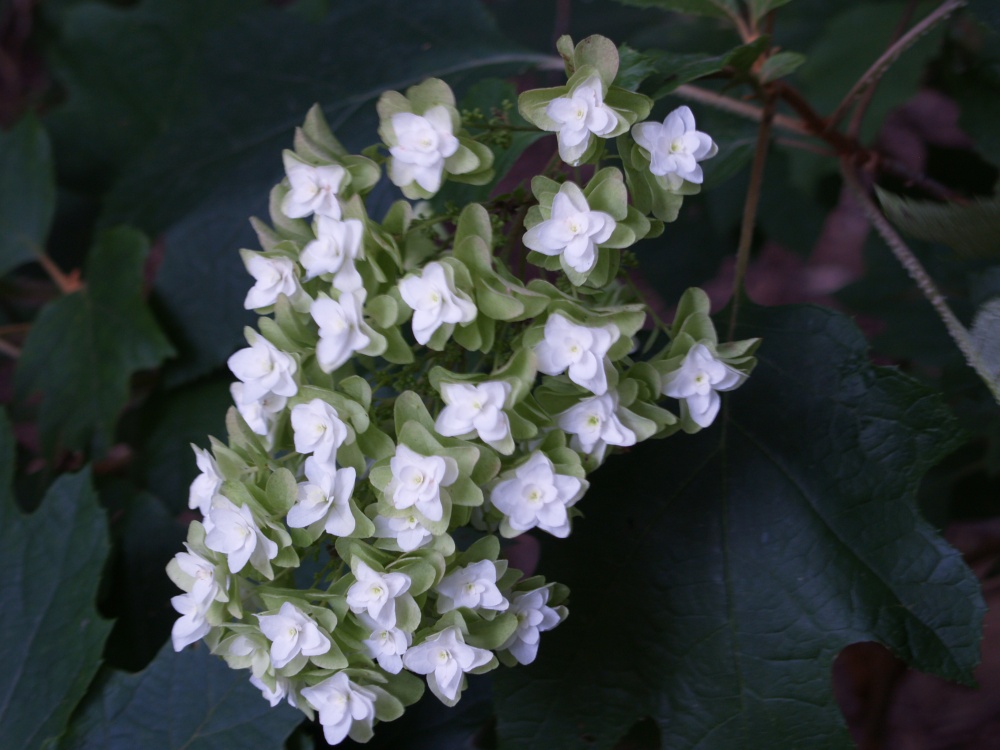
Oakleaf hydrangeas (Hydrangea quercifolia, above) planted beneath the arching trunk of the redbud have grown thin, and bloom weakly, possibly due to the thin, dry soil as much as the lack of sunlight. At other points in the garden, given more moist conditions and a few hours of sun, this hydrangea grows thick and blooms beautifully, and the autumn color is spectacular and prolonged.
With less than stellar performances from the redbud and hydrangeas I often choose to simply ignore the area, detour around, try to forget this troublesome spot. Further up the slope the stone path that runs parallel to the side of the house is hopelessly obstructed by large leaf hostas and arching branches of tall nandinas. To stray from the path inevitably leads through a stretch of mud, and care must be taken to avoid carrying that into the house lest the wife put a stop to all this nonsense and demand more paths, and mulch, all of which seems like so much labor. And so you can see that the reasonable solution is to avoid the area altogether.
But, at least for today, or until the spending of dollars and labor must begin, the plan will be to concentrate efforts to add a few evergreens that will tolerate the shade, and perhaps a flowering understory tree or two that will lend a bit more substance. Certainly the native dogwood (Cornus florida, in bloom in April above) will do well here, and the upright columnar plum yew (Cephalotaxus) will offer a winter presence currently lacking (and the long dark green needles lend an interesting textural element not found in other shade plants).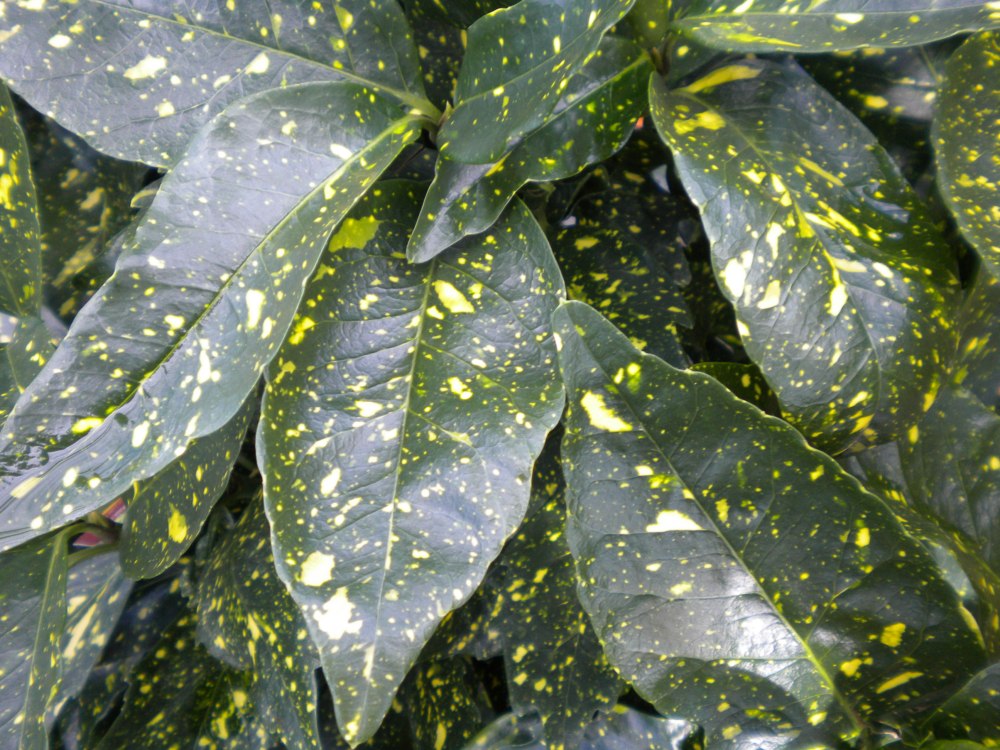
The gold splashed forms of aucuba (Aucuba Gold Dust, above) planted nearby have nearly recovered from being nibbled to near death by deer a winter ago, and with my newfound commitment to spraying the deer repellent, both gold and green leafed aucubas will work wonderfully, so there is another evergreen, and both beali and Winter Sun mahonias (below) have grown splendidly, so there’s another.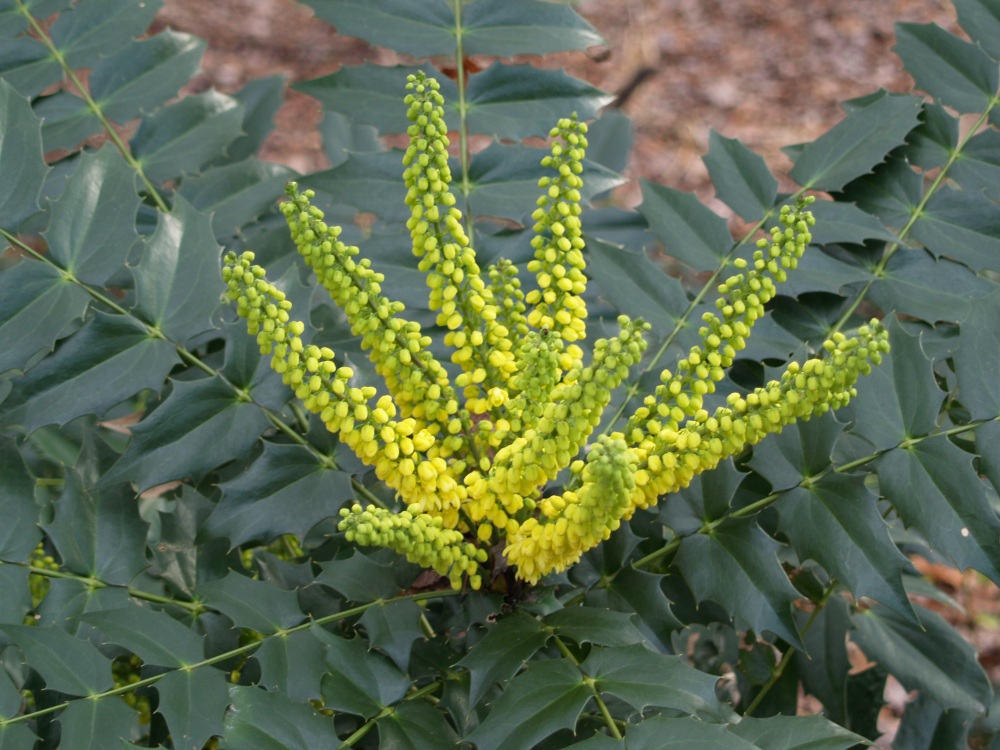
Without the threat of deer I can resume collecting hostas, and with the dark evergreen plum yew and aucuba the huge gold leaves of Sum and Substance will work particularly well. Helleborus (below) have done quite well in this dry shady location, and this is an excellent opportunity to expand my collection of these fine late winter bloomers. Now we’re getting somewhere!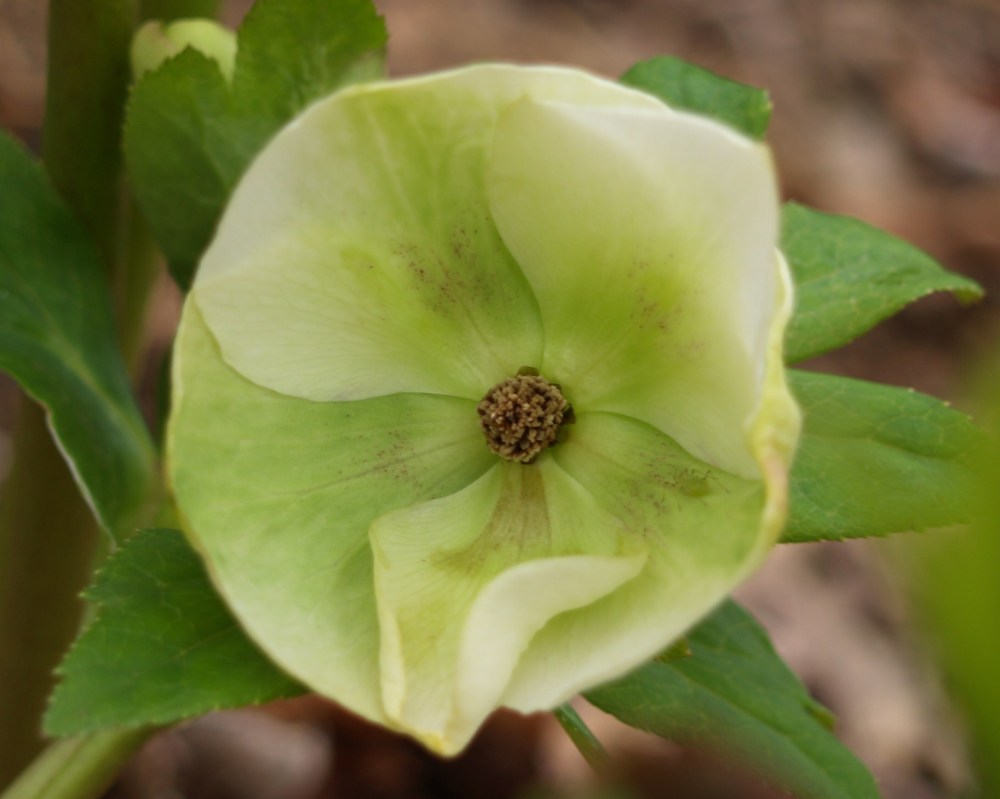
My wish list of perennials to plant this spring has included mostly those preferring sun, but I will reconsider and attend more to those for shady gardens. With these final touches I’m confident that I can bring this together within a reasonable budget, but if not, the result will be so marvelous that stretching the budget a bit won’t be painful at all.
I am encouraged to read that your aucuba came back after being “nibbled to near death by deer.” That is the state my newly planted (last fall) aucuba are in now. I chose aucuba because it was listed as not often eaten by deer on the Rutgers Univ. Ag School website, and I see many thriving exemplars in my neighborhood. However, my shrubs are practically bare stems at this point. Our yard is frequently visited by as many as 6 deer at a time. I will definitely start using deer repellent and hope that they will come back in the spring.
The aucuba in my garden were bare stems after the deer took a liking to them. In the spring they sent out growth all the way to the tips, but they’ll need this spring’s growth to fill out. With a plant that was installed in the fall there could be more of a a problem in it returning to good health, but I’m guessing that it will be okay.